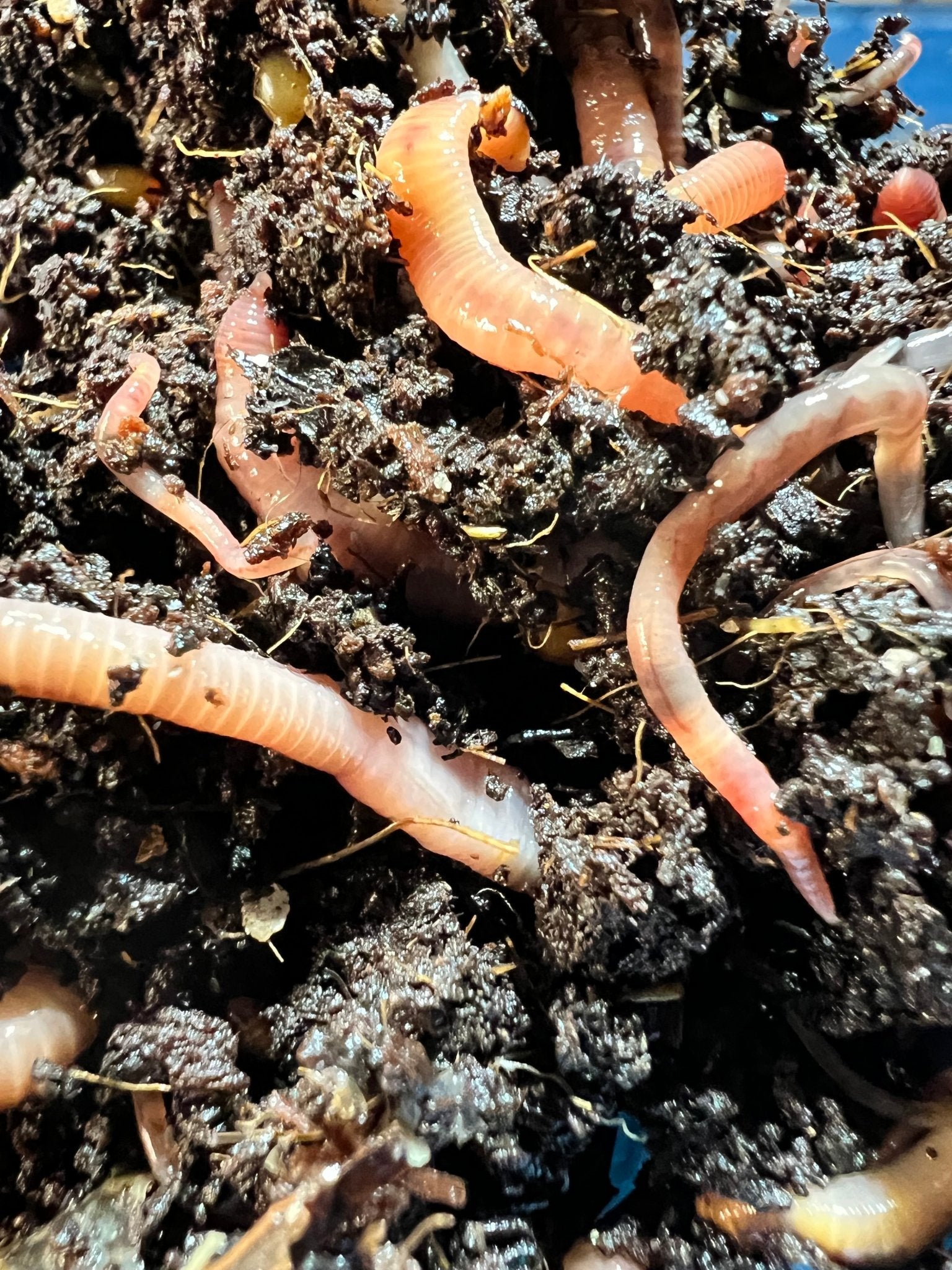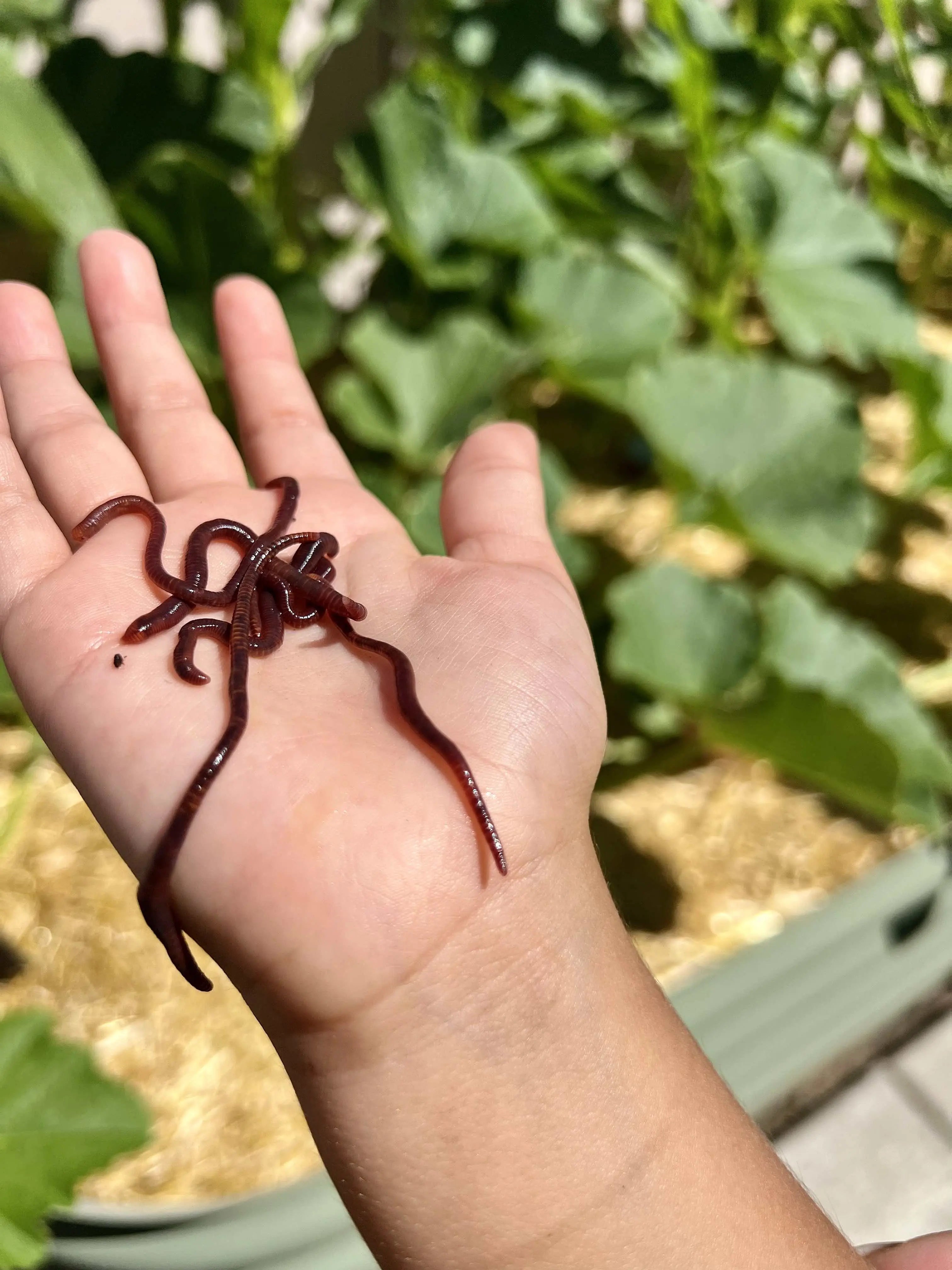Red Wiggler Worms for Sale - Sustainable Waste Administration Solution
Red Wiggler Worms for Sale - Sustainable Waste Administration Solution
Blog Article
Making The Most Of the Benefits of Red Wiggler Worms: A Comprehensive Guidebook for Home Gardeners and Urban Farmers
In the realm of sustainable horticulture practices, red wiggler worms stand as unsung heroes, silently changing natural waste right into nutrient-rich spreadings that can function marvels for dirt wellness. As home garden enthusiasts and urban farmers increasingly seek cost-effective and eco pleasant means to improve their yards, the potential benefits of taking advantage of the power of red wigglers can not be overemphasized. From decreasing kitchen area waste to cultivating much healthier plants, the use of these humble animals supplies a myriad of advantages. By discovering the ins and outs of exactly how to efficiently look after and optimize the benefits of red wiggler worms, individuals can open a wide range of possibilities for enhancing the sustainability and productivity of their horticulture undertakings.
Understanding Red Wiggler Worms
Red Wiggler worms, renowned for their reliable composting capacities, are a species of earthworms commonly utilized in vermiculture techniques. These worms, scientifically referred to as Eisenia fetida, flourish in decomposing organic material, making them suitable candidates for composting (Red Wiggler Worms). Red Wigglers are starved eaters, capable of eating their very own weight in organic waste daily. Their gastrointestinal procedure breaks down natural matter into nutrient-rich spreadings, which are an important resource for improving dirt and promoting plant development.
One trick feature of Red Wiggler worms is their reproductive rate. These hermaphroditic animals have both male and women reproductive body organs, enabling them to duplicate swiftly under desirable conditions. A fully grown Red Wiggler can create numerous offspring in a brief duration, ensuring a stable population within a composting system.

Establishing a Worm Bin
When establishing a worm container for vermiculture purposes, correct prep work and focus to detail are crucial for developing a favorable environment for Red Wiggler worms. Begin by picking a suitable container for your worm container.

Area the worm bin in a great, dark location away from straight sunlight and extreme temperature levels. Routinely monitor the moisture levels, adding water if the bed linen feels dry or half-cracked. Feed the worms a well balanced diet plan of fruit and vegetable scraps, avoiding citrus fruits, onions, and spicy foods. By adhering to these steps, you can establish a growing worm bin that will efficiently refine organic waste right into nutrient-rich vermicompost for your yard.
Feeding and Maintaining Worms
Making sure a nourishing and balanced diet is crucial for the health and wellness and efficiency of Red Wiggler worms in a vermiculture system. Red Wigglers are ravenous eaters, with the ability of eating their own body weight in natural matter daily. To maintain a growing worm population, it is important to offer them with a range of food scraps such as vegetables and fruit peels, coffee premises, tea bags, and smashed eggshells. However, it is necessary to avoid feeding them citrus fruits, onions, garlic, dairy items, meat, and oily foods as these can be damaging to the worms or trigger undesirable smells in the container.
Proper wetness degrees are additionally essential for the health of Red Wiggler worms. By vigilantly checking their diet, wetness, and ecological conditions, home gardeners and urban farmers can sustain a healthy and effective Red Wiggler worm populace for composting objectives.
Collecting Worm Castings
To effectively remove nutrient-rich worm spreadings from click this link the vermicompost, a systematic harvesting procedure is necessary for maximizing the composting advantages. Red Wiggler Worms. The very first step in collecting worm spreadings is to motivate the worms to move away of the bin. This can be achieved by putting fresh food scraps on one side and leaving the various other side undisturbed for a few days. As soon as most of worms have actually relocated to the side with fresh food, the spreadings can be gathered from the opposite side.
After the castings have actually been harvested, it is essential to divide any kind of continuing to be worms from the castings to avoid harming them throughout storage space or application. One effective technique is to develop cone-shaped heaps of castings under intense light. Worms will intuitively relocate away from the light, enabling very easy splitting up and elimination.
Lastly, the harvested worm castings must be kept in an awesome, dark, and completely dry location to keep their high quality and performance as a nutrient-rich soil modification. By following these steps, home garden enthusiasts and city farmers can make the most of the benefits of red wiggler worms in their vermicomposting systems.
Using Worm Castings in Gardening
The consolidation of nutrient-rich worm castings into garden dirt can significantly enhance plant development and total soil right here wellness. Worm castings, likewise recognized as vermicast, are a natural fertilizer produced by red wiggler worms as they break down raw material. These castings are rich in essential nutrients like nitrogen, phosphorus, potassium, and valuable microbes that promote plant growth and improve soil structure.
When using worm castings in gardening, it is important to mix them completely into the dirt or utilize them as a leading clothing around plants. The slow-release nature of worm castings ensures a steady supply of nutrients to plants in time, minimizing the risk of nutrient leaching and promoting long-lasting dirt fertility. In addition, worm spreadings aid improve soil aeration, water retention, and microbial activity, developing a healthy and balanced setting for plant roots to thrive.

Verdict
In conclusion, the use of red wiggler worms in home horticulture and metropolitan farming can dramatically benefit dirt wellness and plant development. By comprehending how read this article to establish up and preserve a worm container, feed the worms correctly, and gather their nutrient-rich castings, garden enthusiasts can make best use of the advantages of these earthworms.
In the world of lasting gardening practices, red wiggler worms stand as unsung heroes, quietly changing organic waste into nutrient-rich spreadings that can function marvels for dirt health.When developing a worm container for vermiculture functions, appropriate prep work and focus to detail are essential for creating a helpful setting for Red Wiggler worms. The very first action in gathering worm castings is to encourage the worms to migrate to one side of the container. Worm spreadings, likewise known as vermicast, are an all-natural plant food generated by red wiggler worms as they break down organic issue. By recognizing exactly how to set up and maintain a worm container, feed the worms appropriately, and collect their nutrient-rich castings, gardeners can make best use of the benefits of these earthworms.
Report this page